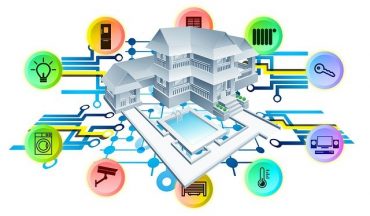
Real-time analytics is only valuable if the systems that collect, move, and analyze that data are up and running. This has drawn increased attention to availability, time to recovery, and disaster recovery itself.
In the past, you may have considered your IT infrastructure to be efficient if IT systems were working, if there was a lack of staff complaints, and if you did not regularly hear from your IT department. However, this is no longer sufficient. Indeed, modern businesses are so reliant on data that an IT disaster can be catastrophic.
Unfortunately, the sheer number of modern data threats is ever-increasing, with examples ranging from hardware failure and site failure caused by fires or floods, through to file corruption, phishing and ransomware attacks. Additionally, human error is also responsible for a significant number of threats or breaches.
See also: What are the Best Disaster Recovery Practices for 2019?
The frequency of threats has also increased. In fact, according to the latest available figures from the Department for Digital, Culture, Media, and Sport, more than 43 percent of businesses suffered a cyber breach or attack in 2017. With this in mind, you should ask yourself: is your IT infrastructure set up to cope with disaster?
IT Infrastructure Management Services
In the modern, digital age, your IT infrastructure is more important than ever before, yet many SMEs continue to fail to invest sufficiently in this area. This can lead to, among other things, a heightened risk of IT disaster occurring, reactionary spending on IT when problems arise, and inefficiencies within IT systems.
For a lot of SMEs, in-house IT support can be either limited or non-existent, and this can make it important to acquire IT infrastructure management services from an outsourced provider.
In order to determine whether your infrastructure is set up to cope with an IT disaster, you must analyze what is being delivered, in terms of end-user support, maintenance support, backup services, cloud hosting services, account management and monitoring. From there, you must also give consideration to what a managed service provider (MSP) can offer, in terms of these things, as well as a more rounded disaster recovery plan.
IT infrastructure management services can be especially important for businesses using real-time (RT) or near real-time (NRT) computing because their day-to-day operations rely on continuous availability. A third party with expertise in this area can monitor infrastructure, spot problems before they arise, and respond to disaster appropriately.
Creating a Disaster Recovery Plan (DRP)
Ultimately, to ensure your IT infrastructure is set up to be able to cope with disaster, it is important to create a comprehensive disaster recovery plan (DRP). Such a strategy should begin at the business level, with your organization pinpointing the IT features that are most critical to day-to-day operations.
For example, if your business relies on RT or NRT data analysis, it is critical that you retain access to that data, even in the midst of an IT disaster, and the apps you rely on to run these analyses should still be usable. This may require a combination of physical data back up, carried out regularly, along with cloud hosting services.
You will also need to establish a budget, document your current disaster recovery strategies, identify areas for improvement, and consider the various disasters you need to plan for. These might include malicious attacks, scams, application failures, site failures, communication problems, power outages, and more.
It is generally accepted that there are three major disaster recovery components linked to your IT infrastructure: systems, connectivity, and data. Systems refer to things like your servers, while connectivity covers things like local area and wide area network connections and your communication methods.
With regards to data, a disaster-proof IT infrastructure will include a hot copy, which will have protections in place, along with a backup copy, which can be used to restore data and an off-site copy. This off-site copy may require the use of cloud hosting services and will offer a back up in the event of a more catastrophic incident.
Data should also be backed up hourly, as opposed to daily or even less frequently than that.
The consequences of not having an effective IT disaster recovery plan can be catastrophic for an organization reliant on RT or NRT insights because data can become inaccessible, or the apps used to analyze that data could become unavailable. This could then lead to reliance on data that is out-of-date or the complete cessation of operations.
Cloud hosting services tend to play a valuable role here in ensuring data is always accessible, even if the disaster is something physical, which causes people to need to work off-site for a while.
Monitoring and Preventative Maintenance
With SMEs, actively monitoring and maintaining IT systems and infrastructure can be time-consuming and even difficult to justify financially. However, your internal staff can be spared this burden if you turn to a managed service provider (MSP) that is able to offer network operations center (NOC) services.
The primary benefit is having proactive infrastructure maintenance and management services available 24-hours a day, seven days a week. A dedicated team will be able to monitor your business systems, ensuring they remain fully operational and available, and intervention will also be possible when required.
Preventative maintenance techniques also tend to play a fundamental role in managed services. These will typically include planned maintenance activity, specifically designed to prevent outages and other problems within your IT infrastructure, such as the installation of security updates, patches, service packs, and other ‘fixes.’
For companies reliant on RT data centers, it is better to be proactive rather than reactive. By taking the necessary steps to prevent problems from occurring in the first place, these businesses can ensure that their data centers remain operational, avoiding situations where lost data needs to be retrieved, or where insights cannot be obtained.
Conducting a Root Cause Analysis (RCA)
Finally, another way to increase the resiliency of an infrastructure is to conduct a root cause analysis (RCA). This is the name given to a formal problem-solving process, which is intended to improve productivity and protect the integrity of your infrastructure by eliminating recurring incidents.
The objective behind an RCA is to understand what went wrong and to report the incident’s impact accurately so that it is fully understood. This then allows corrective and preventative actions to be undertaken, so that the overall risk of recurrence can be reduced to a level that is acceptable to your organization.
For a business that utilizes real-time analytics or insights, any situation where data, systems, or apps become unavailable can be extremely costly. Therefore, if the worst should happen, it is imperative that you are able to identify precisely what happened, learn lessons from it, and prevent the problem from reoccurring.
The Last Word
A disaster recovery plan is focused on setting up IT infrastructure so that your business can cope with major incidents. The plan itself should consist of both proactive and reactionary methods for keeping your business up and running, such as active monitoring, preventative maintenance, data back up, and root cause analysis.
While prevention is always better than cure, it is important to be realistic and plan for the worst-case scenario. If disaster does strike, you need to know that you can recover data quickly, keeping disruption to a minimum.




























